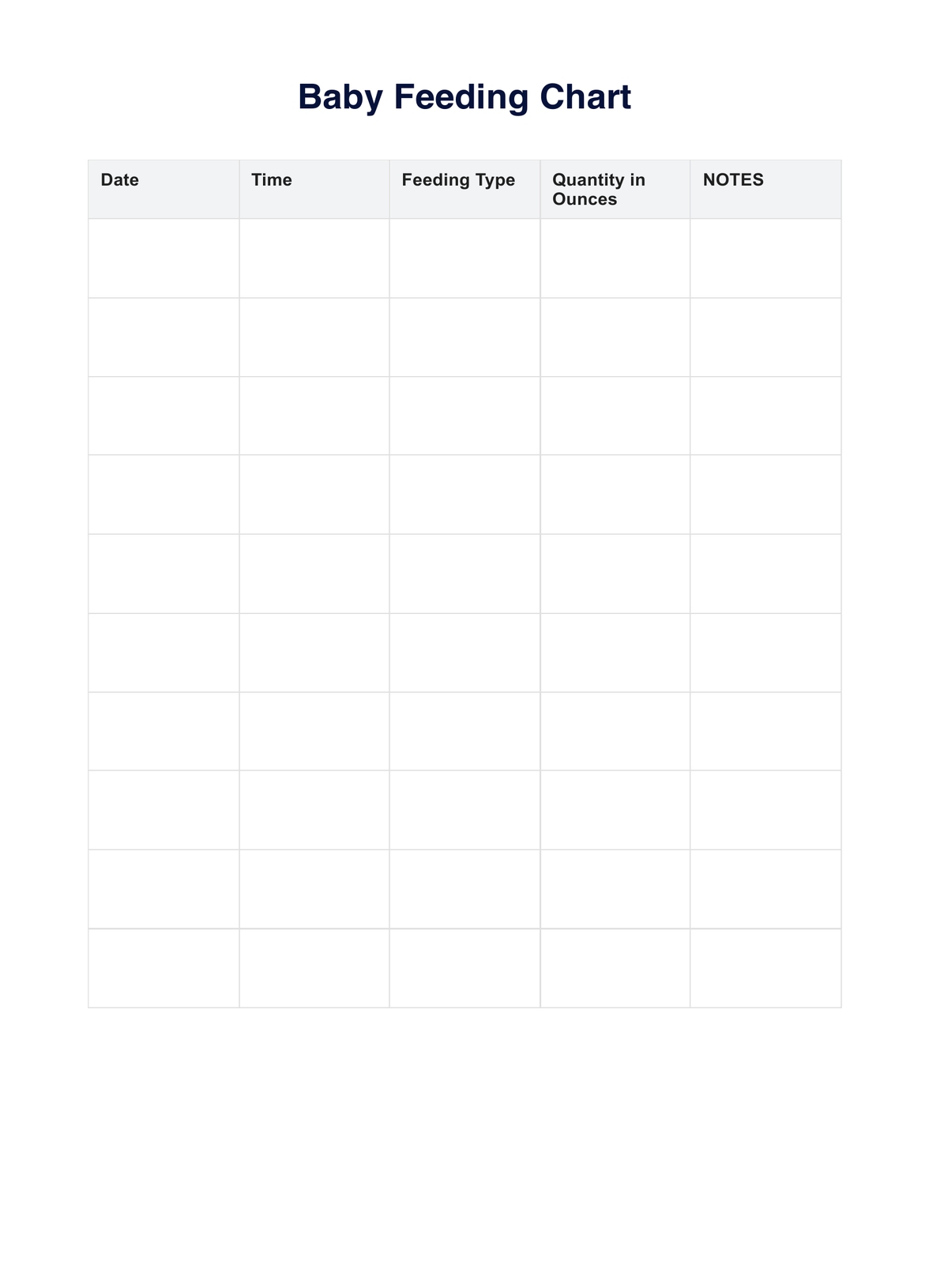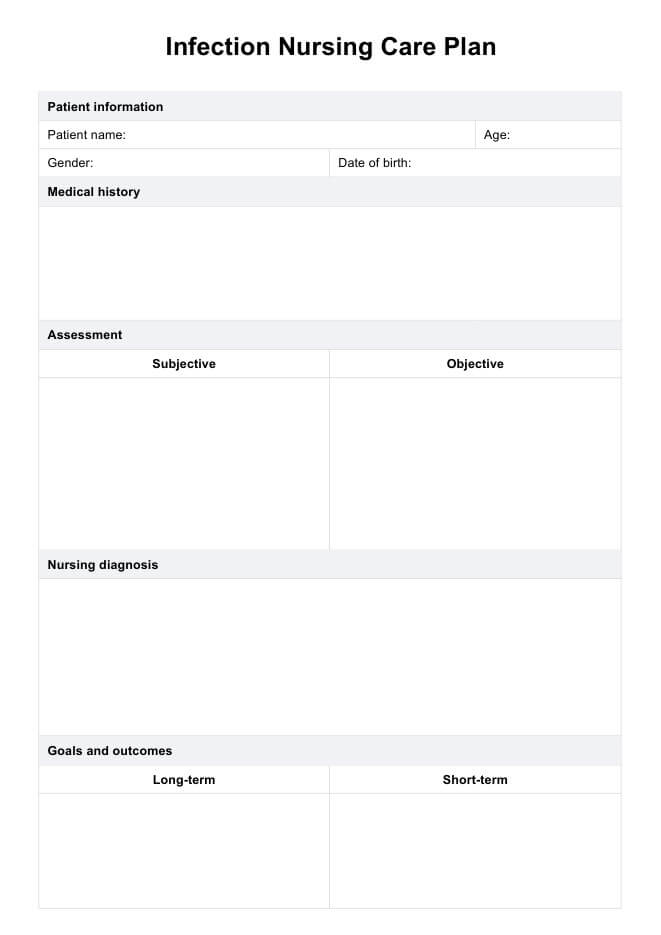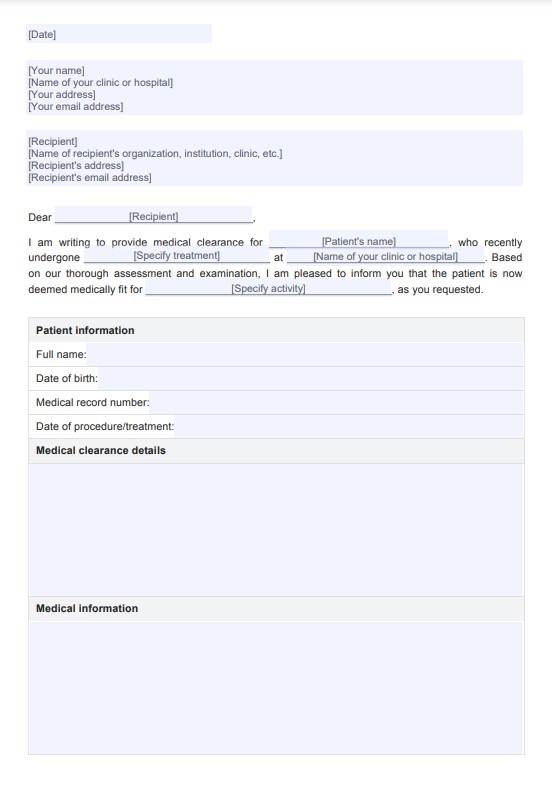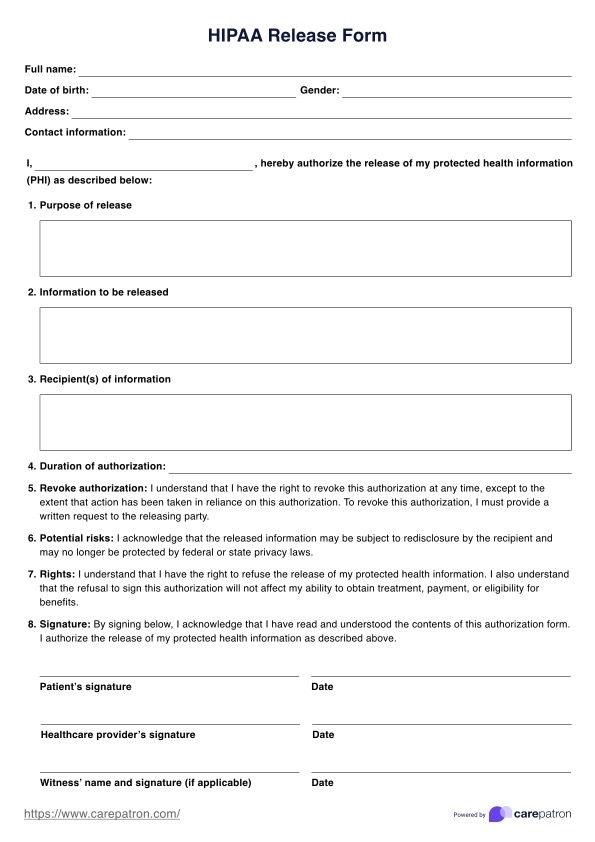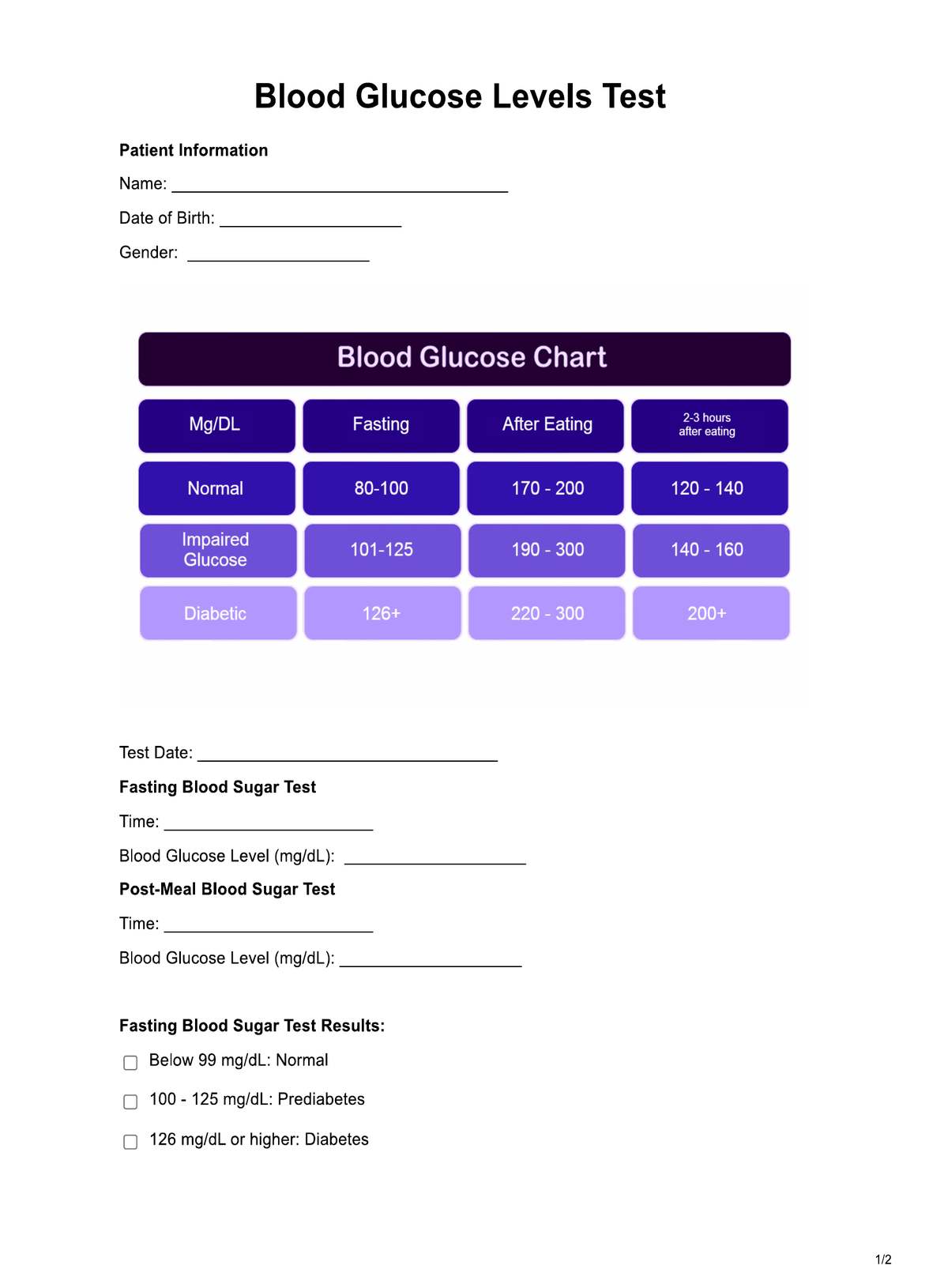Baby feeding chart
Track your baby's feedings with a helpful chart. Ensure proper nutrition. Download a free PDF example and learn effective usage.


The importance of a Baby Feeding Chart
A Baby Feeding Chart is an invaluable tool for parents to monitor and organize their infant's feeding schedule.
Whether your baby takes breastmilk or formula, tracking their feeding habits provides a comprehensive overview of their nutritional intake. This aids parents in ensuring their little ones receive the essential nourishment needed for healthy growth and development.
A well-structured baby feeding chart records the timing of each feeding session. It should allow parents to note crucial details such as the quantity consumed and the type of feed, whether it be breast milk or formula.
Additionally, the baby feeding chart should align with a nursing care plan.
This level of detail is beneficial for those managing both breast and bottle feeding. Maintaining a consistent and organized record allows caregivers to quickly identify patterns and make informed decisions about their baby's nutrition.
Moreover, a baby feeding chart becomes an insightful resource for understanding your baby's eating habits over time. Observing trends in the chart can offer valuable insights into your baby's preferences, allowing you to tailor feeding routines to their unique needs. A baby feeding chart is a proactive tool that empowers parents to foster a healthy and nourishing environment for their infants, promoting overall well-being from the early stages of life.
Baby feeding chart Template
Baby feeding chart Example
Why babies eat so often?
Understanding the frequency of baby feeding is essential for parents navigating the intricacies of a newborn's dietary needs. Breastfed and formula-fed babies have small stomachs and rapidly growing bodies, necessitating frequent feeding sessions. This characteristic is a fundamental aspect of their development and is influenced by various factors.
Breastfed babies, in particular, require more frequent feedings due to the easily digestible nature of breast milk. The composition of breast milk changes dynamically, adapting to the baby's nutritional requirements, which makes smaller, more frequent feedings optimal. Formula-fed babies, on the other hand, may eat slightly less frequently, but the principle remains: small stomachs require regular refueling to sustain their rapid growth.
The baby's feeding schedule is intricately linked to their growth spurts. Babies often display increased hunger during growth spurts, prompting more frequent feedings. This natural and healthy response ensures that the baby's nutritional needs are met during accelerated development.
Parents must recognize and adapt to the baby's feeding schedule. Some babies may naturally prefer smaller, more frequent meals, while others may be more inclined to consume larger quantities less often. Paying attention to cues such as hunger signs and satisfied behavior aids in establishing a feeding routine that aligns with the baby's unique needs.
The regularity of baby feeding, breast milk or formula, is a testament to their rapid growth and development. Embracing and accommodating these natural patterns ensures your baby receives the nourishment required for optimal health and well-being.
Understanding the dynamics of a baby's feeding schedule empowers parents to create a nurturing environment that supports their little one's growth journey.
Feeding schedule for breastfed newborns
Establishing a reliable feeding schedule for breastfed newborns is crucial to nurturing their growth and well-being. Unlike formula-fed infants, breastfed babies often feed more frequently due to the unique composition of breast milk and the efficient manner in which they digest it.
Newborns, especially those relying on baby breastmilk, have smaller stomachs, requiring more frequent refueling. Breast milk is easily digestible, providing essential nutrients tailored to the infant's evolving needs. Offering breast milk whenever the baby shows hunger cues is recommended, fostering a responsive and flexible feeding routine.
Additionally, understanding a newborn's feeding schedule involves recognizing hunger signs such as rooting, sucking motions, or increased alertness. Responsive feeding, where caregivers offer the breast when the baby signals hunger, helps establish a harmonious feeding routine. In the initial weeks, newborns may feed every two to three hours, including at night.
Creating a feeding schedule for breastfed infants is not about adhering to strict time intervals but responding to the baby's cues. Feeding patterns may evolve as newborns grow, and the intervals between feeds may lengthen. The key is attuning to the baby's needs, ensuring they receive the nourishment essential for optimal development.
Feeding schedule for formula-fed newborns
Planning the feeding schedule for your formula-fed bundle of joy is a delightful journey that ensures their tummies stay happy and full. Unlike breastfed babies, formula-fed babies might groove to a different beat in their formula-feeding routine.
Picture this: while breast milk is a speedy traveler through tiny tummies, infant formula takes a bit more stroll. So, formula-fed babies might enjoy a heartier meal, leading to slightly longer breaks between formula-feeding than breastfed buddies.
At this point, parents may be curious about how much formula feeding to offer their little ones. In the first few days, it's often a cozy 2 to 3 ounces per baby formula feeding, with this quantity growing as babies embark on the growth adventure. Typically, parents may rendezvous every three to four hours, creating a rhythm that adapts and evolves as their munchkin blossoms.
The magic trick? Pay attention to the baby's adorable hunger hints and satisfaction signs. Parents should adjust the quantity based on their whims and fancies. In addition, they should enjoy adapting and dancing to their baby's unique tune, creating a feeding routine and a heartwarming connection filled with nourishment, comfort, and love. Cheers to the delightful journey of formula-fed baby bliss!
Signs newborns are hungry or full
Navigating your baby's cues is an art every parent masters with time. Recognizing when your little one is hungry, or content is essential for establishing healthy eating habits and maintaining your baby's feeding schedule. Here are some key signs to look out for:
Hungry signs:
1. Rooting Reflex: When hungry, most babies exhibit the rooting reflex, turning their heads toward anything that brushes against their cheek or mouth.
2. Sucking Motions: Newborns may display sucking motions, either by putting their fingers or fists in their mouths, signaling a desire for nourishment.
3. Increased Alertness: A hungry baby becomes more alert and may exhibit heightened wakefulness, showing interest in their surroundings.
Full signs:
1. Turning Away: As your baby becomes satisfied, they might turn their head away from the breast or bottle, indicating a sense of fullness.
2. Relaxed Body Language: A content baby often displays relaxed body language, with loosened fists and a calm demeanor after a satisfying feeding.
3. Slowed Sucking: A gradual slowing down of sucking motions can signify that your little one is content and no longer seeking nourishment.
Responsive feeding - what it is and how to practice it
Responsive feeding is a nurturing approach that involves attentively responding to your baby's hunger cues and needs, fostering a positive feeding experience. This practice aligns with your baby's natural rhythm, especially crucial during the newborn stage and first few weeks. Here's how you can embrace responsive feeding:
1. Be attentive to hunger cues
Observe your baby for subtle cues like sucking motions, increased alertness, or rooting reflex. Responding promptly to these signals helps establish a harmonious feeding routine.
2. Feed on demand
Instead of adhering to a rigid timetable, be flexible with feedings. Newborns may not follow a typical feeding schedule, so be prepared to nourish them when hunger strikes.
3. Allow self-regulation
Encourage self-regulation by paying attention to cues that indicate your baby is full, such as turning away or slowing down sucking motions. This helps prevent overfeeding.
4. Establish a comfortable environment
Choose a quiet, comfortable space for feedings. Minimize distractions to allow your baby to focus on eating, creating a positive association with mealtimes.
5. Bond through eye contact
Establish eye contact and engage in gentle touch during feedings. This not only enhances the emotional bond but also encourages your baby to feel secure and content.
Foods to avoid in the first year of life
Introducing solid foods to your baby is an exciting milestone, but it's essential to be mindful of what to avoid during this crucial developmental stage. Here's a guide on foods to steer clear of for babies under 1 year old, some feeding frequency, and how to introduce solid foods:
1. Honey
Avoid introducing honey to babies under 1 year old. Honey may contain spores that can lead to infant botulism, a rare but serious illness.
2. Choking hazards
While introducing finger foods, steer clear of small, hard items that could pose a choking risk. Opt for age-appropriate healthy foods like soft fruits and cooked vegetables. When starting solid foods, be sure they are soft to chew and easy to digest.
3. Cow's milk
Hold off on introducing cow's milk as a primary drink until after the first year. Before then, breast milk or formula remained the ideal source of nutrition. You can also use such when letting a newborn eat baby cereal.
4. Salt and sugar
Limit added salt and sugar to your baby's diet. Their tiny kidneys are still developing, and their taste buds are sensitive, so moderation is key.
5. Certain allergenic foods
When starting solids, introduce common allergenic foods like peanuts, eggs, and fish with caution. Begin with small amounts and watch for any adverse reactions.
6. Processed foods
Avoid introducing foods that are processed and high in sugar, salt, or artificial additives. Opt for nutrient-rich, whole foods to support your baby's growth and development.
7.Nighttime feedings
While not a specific food, avoiding late-night feedings after six months can contribute to better sleep patterns and encourage independent sleep.
Signs of readiness for solids
Recognizing when your baby is ready for their first taste of solid food is an exciting step in their development. Most newborns start showing signs of readiness around six months of age. Look out for these cues:
1. Head control
As your baby gains control over their head and neck muscles, they're better equipped to sit with support, a crucial skill for safe and comfortable feeding.
2. Sitting up with support
The ability to sit upright with minimal support is a positive indication that your baby is ready for solid foods. This position ensures safe swallowing and minimizes the risk of choking.
3. Increased interest in food
If your little one starts displaying curiosity about what you're eating, reaches for your plate, or seems eager to participate during family meals, it's a sign that they're intrigued by the world of solid food.
When introducing solids, start with single-ingredient pureed vegetables, like carrots or peas, to observe how your baby responds. Monitor for any signs of food allergies, such as rash, hives, or digestive discomfort.
Remember, every baby is unique, and while six months is a general guideline, some babies may show readiness a bit earlier or later.
Always consult your pediatrician before introducing solid foods to ensure a smooth transition and provide the best start for your baby's culinary adventure.
How can Carepatron help with baby feeding charts?
Managing a newborn baby's feeding schedule is simpler and more efficient with Carepatron's user-friendly general practice software. Here's how Carepatron can assist parents, pediatricians, nurses, and caretakers:
1. Organized feeding schedule
Carepatron's baby feeding chart templates offer a structured and organized way to record and track a newborn feeding schedule. Easily log feeding times, quantities, and any additional notes to maintain a comprehensive overview.
2. Weight monitoring
Keeping a baby's weight is crucial for monitoring growth and development. Carepatron's charts seamlessly integrate weight monitoring, providing a holistic view of the baby's health and nutritional status.
3. Collaboration with lactation consultants
For breastfeeding mothers seeking guidance, Carepatron's baby feeding charts facilitate collaboration with lactation consultants. Share the chart securely for professional advice on optimizing feeding routines and addressing lactation concerns.
4. Visualizing baby's stomach capacity
Carepatron's intuitive charts include features to visualize and understand a baby's stomach capacity. This helps caregivers tailor feeding quantities appropriately, ensuring the baby receives optimal nutrition without overfeeding.
5. Schedule feedings advised
Carepatron's baby feeding chart templates align with schedule feedings advised by healthcare professionals. Following recommended feeding intervals becomes seamless, promoting a consistent routine beneficial for the baby's well-being.

Commonly asked questions
No, it's not advisable to drop night feeds for newborns in the first two weeks. Newborns need frequent feeding to support their rapid growth, and night feeds are essential for ensuring they get enough nourishment. Carepatron's baby feeding chart template provides a helpful visual aid for tracking these crucial night feedings, ensuring your little one's needs are met around the clock.
Newborns typically feed every 2 to 3 hours, including nighttime. It's important to feed on demand and not exceed 4 hours between feeds, as their tiny stomachs need regular nourishment. Utilize Carepatron's baby feeding chart template to record and analyze your newborn's feeding patterns, promoting a healthy and consistent routine.


